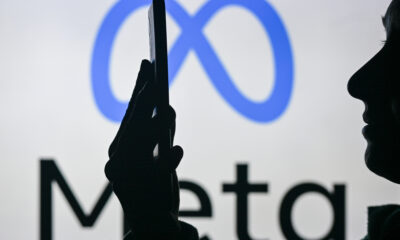
Personal Story

Mind the tech gap, don’t try to bridge it
As much as you try to understand the ways in which teens and children use technology and social media, the ever-growing disparity between yourselves and your children is difficult to bridge. It makes sense, considering that Moore’s law suggests that the rate of technological progression and innovation is exponential. And as the reach of technology grows, so does the generation gap between those who grew up with it and those who didn’t.
For our generation, technology isn’t some big, scary entity that needs to be controlled or censored, but a normal part of our lives. We’re able to consume whatever media we choose with the click of a button.
And though some may use this freedom in harmful ways, most of us are more preoccupied with listening to music, chatting to our friends, watching videos, or playing video games.
Parents fear that their children will end up talking to strangers on the dark web when most of us don’t have the patience or skills to access the dark web even if we wanted to. Admittedly, the most illegal thing I’ve done on the internet is pirating a lot of free eBooks.
A lot of us do try to escape our technology once in a while, but ultimately, so much of our lives resides on our devices, whether it be schoolwork, notes, or movies. There’s a cognitive dissonance in seeing influencers posting videos about “slow living” and taking time away from social media while actively maintaining a social media platform.
Social media was created to enhance communication. However, the older generation often thinks that online communication has hindered human connection. Though this may be true, the issue runs deeper than just not being present at the dinner table.
For those who have grown up on smartphones and social media, there’s no longer a way to “switch off”. Conversations with school friends extend into hour-long conversations at home. Not only is this a problem when it comes to bullying, but there’s an ongoing need to feel included. Leaving an active group chat for just a couple of hours can feel like you’re missing a decade’s worth of drama and inside jokes.
Cyberbullying is so much more subtle than many believe. It’s not always an anonymous account leaving nasty comments, or a big group of friends ganging up on someone. Subtle remarks or exclusion from conversations can be just as targeted as overt bullying.
Additionally, when bullies invade your online safe space, there’s a feeling that the bullying is totally inescapable.
Our generation is often classified as “chronically online”. This doesn’t just mean being glued to our screens 24/7, but actually refers to the influence of screen time on our individual and collective consciousness. Being “chronically online” leads one to see the world in a completely different way, dictated by internet culture. Types of people are grouped into “aesthetics”, words and phrases take on completely different meanings, and politics is neatly organised into pretty infographics.
Speaking of politics, one of the biggest issues young people face on social media is “echo chambers” based on the information we consume. A social media echo chamber is created when algorithms use the types of media we interact with to amplify those ideas in our feeds, thus reinforcing those ideas and blocking out contrary opinions.
It affects just about everyone who uses the internet, however, as youngsters who perhaps lack the ability to understand the nuances and biases surrounding certain issues, it often creates one-track mindsets. This is where extremist ideas become dangerous. For example, the average person wouldn’t think twice about a single Andrew Tate video before blocking or scrolling past it. However, a young, impressionable child who interacts with this video and whose feed is now filled with this kind of content would probably start to believe these sentiments.
Sometimes, these devices know us better than we know ourselves. Targeted adverts often seem to read our minds. And while older generations find this more than slightly terrifying, this phenomenon is fairly normal and often convenient for us.
Most of the time, technology offers more convenient alternatives, and we are used to choosing them. It obviously increases our need for instant gratification, but it helps us to keep up in a world that’s fast-paced.
Ultimately, technology is utterly inescapable in today’s world. And though parents may be concerned about how we use social media, chances are they’re falling into all the same traps we are, it’s just more normal in our eyes. That’s not to say that I’m proud of scrolling on TikTok for hours before going to bed or not being able to go anywhere without my phone.
Parents’ concern about teens relying on their phones is entirely valid but perhaps not dealt with correctly. It’s important to teach kids from a young age to have a balance between technology and real life, and to be more mindful of their use of technology as a crutch. As for older kids and teenagers, there’s no way to monitor the use of devices.
In reality, it comes down to trust.
Sincerely
Hanna
- Hanna Resnick matriculated at Redhill last year, and is interning at the SA Jewish Report.










